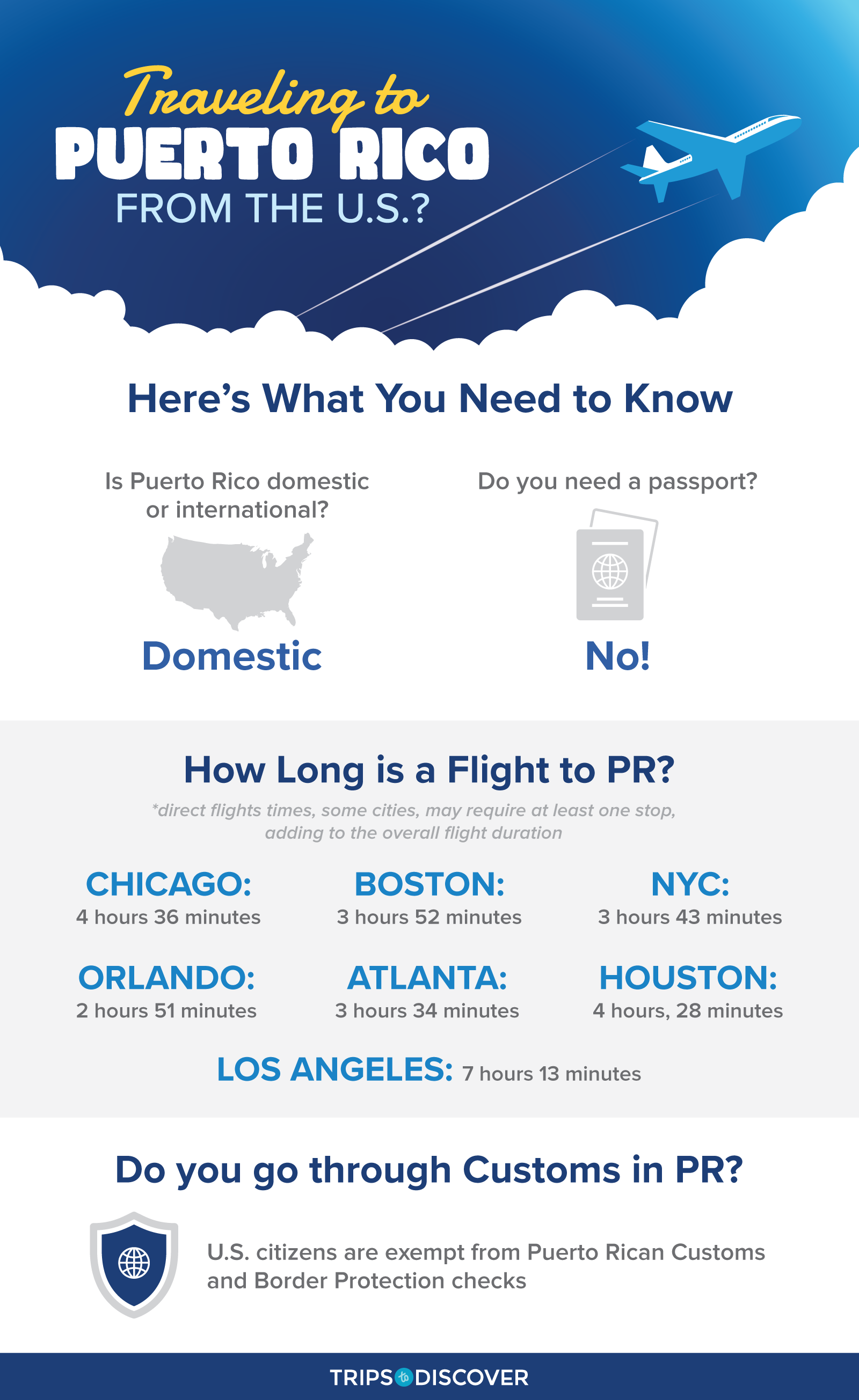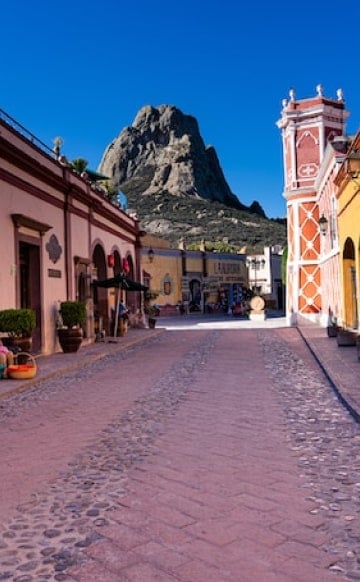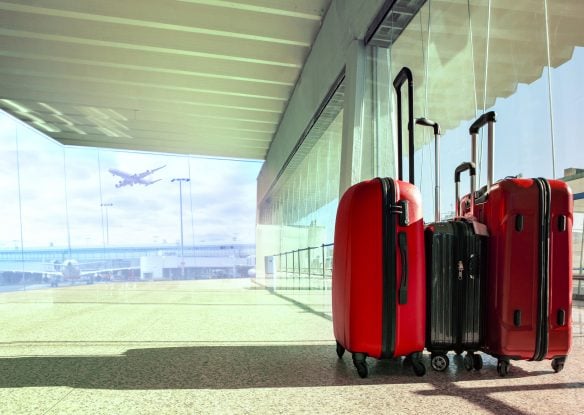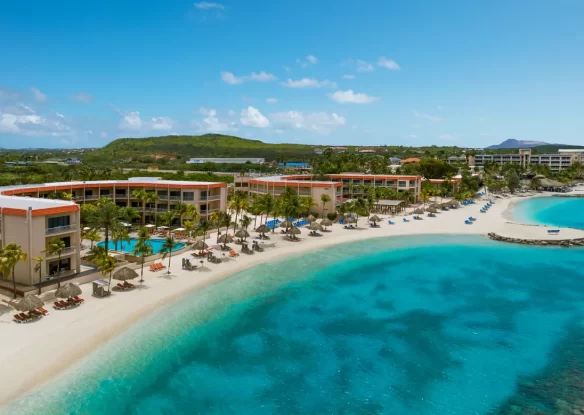Surrounding the allure of American tourism to Puerto Rico, a tropical U.S. commonwealth territory, is an uncertainty of travel logistics for U.S. citizens. Over 29,000 monthly Google searches are performed by Americans asking, “Do you need a passport to go to Puerto Rico?” Others frequently ask if a flight to Puerto Rico is a domestic trip from the U.S. mainland.
Allow us to set the record straight surrounding misconceptions about Puerto Rico’s status within the U.S., particularly regarding tourism. We address your most frequently Googled questions and provide clear answers to this misunderstood topic. Here are the points we’ll cover to make your visit to the island as smooth as possible:
- Is Puerto Rico a Domestic or International Flight?
- Do You Need a Passport to Go to Puerto Rico?
- How Long is the Flight to Puerto Rico?
- Do You Go Through Customs in Puerto Rico?


Is Puerto Rico a Domestic or International Flight?
As a U.S. commonwealth territory, Puerto Rico provides ease of domestic travel for U.S. citizens, as the Internal Revenue Service (IRS) states. Puerto Rico is not an international flight for U.S. citizens departing from the U.S. mainland. Despite the island’s somewhat ambiguous political status as an unincorporated commonwealth territory of the U.S., travel to this Island of Enchantment remains straightforward for U.S. citizens.
Traveling by air from the U.S. mainland to Puerto Rico requires the same documentation as domestic flights within the continental U.S. United Airlines affirms that a valid state or federally-issued ID, such as a driver’s license, passport, or resident card, will suffice.
However, travel to Puerto Rico has a distinctive element compared to most domestic U.S. mainland trips: the CDC recommends certain vaccines for this destination. Although these immunizations aren’t mandatory for U.S. citizens, the CDC highly recommends them.
It’s also important to review your health insurance coverage in Puerto Rico. As PRelocate notes, some insurance policies may not extend their coverage to this region despite Puerto Rico being a U.S. territory. Yet, individuals covered by Medicare can be reassured, as its coverage does extend to Puerto Rico.
On a practical level, most mainland U.S. cell phone plans, including Verizon and AT&T, work in Puerto Rico, eliminating the necessity for a new SIM card.

Do You Need a Passport to Go to Puerto Rico?
According to USAGov, U.S. citizens do not need a passport to travel to the territory of Puerto Rico, and they do not need a passport to re-enter the U.S. mainland, according to U.S. Customs and Border Protection.
The only identification required for U.S. citizens traveling to Puerto Rico is a valid State or Federally-issued ID, such as a driver’s license, permanent resident card, or a DHS trusted traveler card. The TSA provides a comprehensive list.
Furthermore, children under 18 traveling domestically within the U.S. accompanied by an adult do not need any identification, according to TSA regulations. This rule applies as Puerto Rico is a domestic flight from the U.S. mainland. However, unaccompanied minors may be subject to additional ID requirements, like United Airlines, which mandates ID for unaccompanied children ages 15-17.
Take note that beginning May 7, 2025, if you’re using a state-issued ID or license to fly to Puerto Rico or any other location within the U.S., it must be REAL ID compliant.
Lastly, if your passport is close to its expiration date or has already expired, and you’re interested in renewing it even though it’s not necessary for travel to Puerto Rico, I recommend checking out my passport renewal FAQ for further details.

How Long is the Flight to Puerto Rico?
Travelmath provides the average nonstop flight times from major U.S. cities to San Juan, Puerto Rico. Keep in mind these times are for direct flights. However, some cities, such as Los Angeles, may require at least one stop, adding to the overall flight duration.
-
Chicago: 4 hours 36 minutes
-
Boston: 3 hours 52 minutes
-
Miami: 2 hours 32 minutes
-
NYC: 3 hours 43 minutes
-
Orlando, FL: 2 hours 51 minutes
-
Atlanta: 3 hours 34 minutes
-
Houston: 4 hours, 28 minutes
-
Los Angeles: 7 hours 13 minutes
The U.S. Department of Transportation’s (DOT) Bureau of Transportation Statistics (BTS) reports that the average fare for all domestic U.S. flights to the Luis Muñoz Marin International Airport (SJU) in San Juan, Puerto Rico, stands at $287.65. This figure includes both round-trip and one-way flights.
According to the BTS, the airlines ferrying the highest number of U.S. domestic passengers to SJU and their respective shares of total transported passengers in 2022 are:
-
JetBlue Airways: 26% or 1,187,766 Passengers
-
Spirit Air Lines: 17% or 762,088 Passengers
-
American Airlines: 16% or 717,456 Passengers
BTS data reveals that over 4.5 million passengers traveled to Puerto Rico in 2022, making it the 44th most trafficked U.S. airport in terms of passenger count that year. As of March 2023, approximately 1.3 million passengers have already flown to the island, a rise of nearly a quarter million compared to March of the previous year. Given this rate, San Juan could easily welcome more than 5 million passengers in 2023.

Do You Go Through Customs in Puerto Rico?
When arriving in Puerto Rico directly by ship or plane from the U.S. mainland, U.S. citizens are exempt from Puerto Rican Customs and Border Protection (CBP) checks, as indicated by the CBP. This exemption also applies when returning to the U.S. mainland from Puerto Rico, provided there were no departures from the U.S. during your travel.
Moreover, due to Puerto Rico’s status within the U.S. customs territory, as per the Code of Federal Regulations (CFR), the CBP affirms that you can bring back all purchases made on the island to the U.S. mainland duty-free.
However, additional inspections occur when departing Puerto Rico for the U.S. mainland. The U.S. Department of Agriculture’s (USDA) Animal and Plant Health Inspection Service (APHIS) has designated inspectors stationed at Puerto Rico airports. Their role is to examine your luggage, ensuring that no prohibited or restricted agricultural products from the island, including most fruits, vegetables, many plants, flowers, and other consumable items, are being brought back.




































